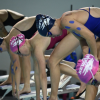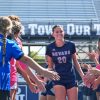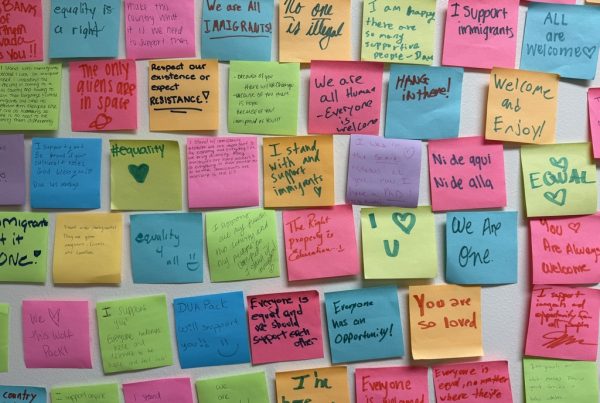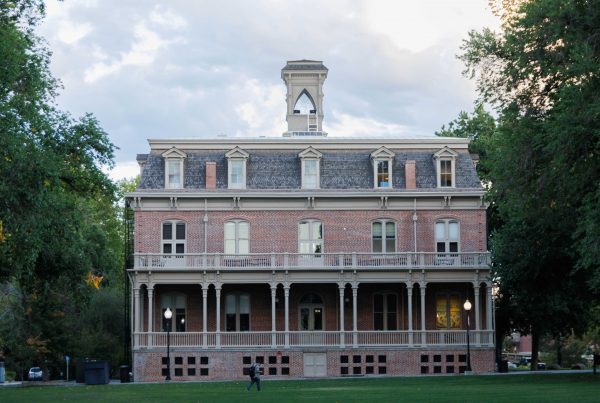Editor’s Note: Hart wants everyone to know that Charles Magill, the founding editor of The Nevada Sagebrush, studied mining engineering.
The Mackay Muckers, one of University of Nevada, Reno’s best and most unknown sports teams, is set for a world championship in Montana from March 20 to 23. However, the Muckers, unlike their more visible compatriots in baseball, aren’t after home runs. This is a whole different ball game: competitive mining.
In Australia last year, its women’s division won four out of seven events — and all three of its divisions clinched best times overall.
“That one was very impressive for all of us,” said Natalie Rubio, the team’s president. With formidable contenders from other schools, last year’s performance exceeded even the team’s highest expectations.
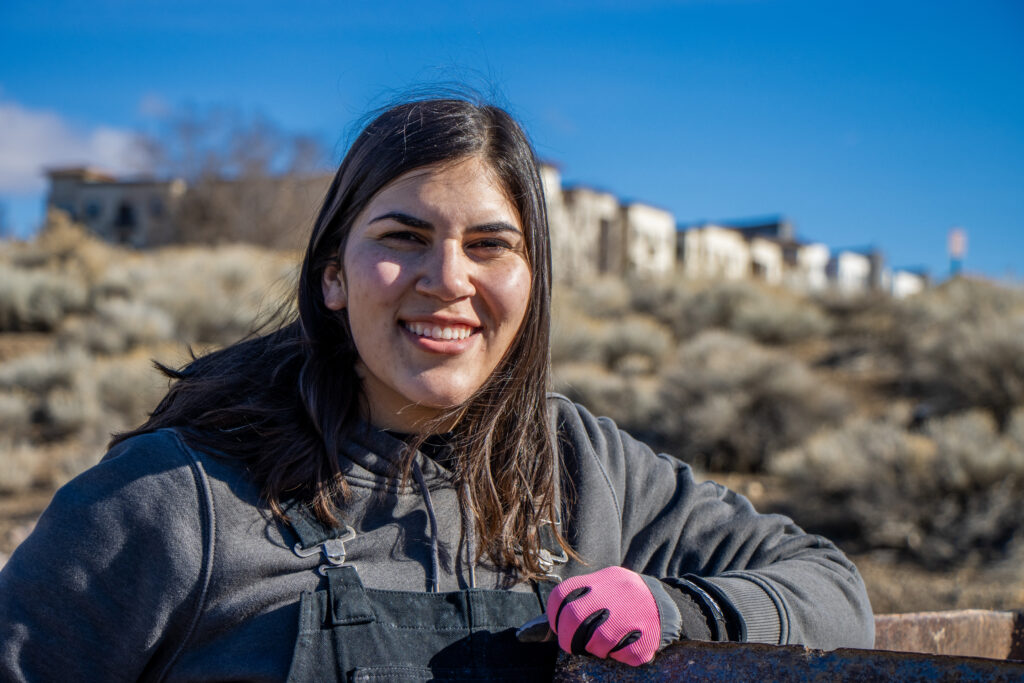
Natalie Rubio, the team’s president, poses for a portrait during Saturday practice Feb. 9.
This year, the seven events will test the Muckers in everything from strength and coordination to the proper use of hand tools.
“We always get a side-eye look at Club Fair,” Rubio said. “Like, you guys shovel dirt for fun?”
In short, yes, but that’s only one of seven events that brings the Muckers — and anyone else they can convince to give it a try — to their practice field on north campus. Regular practice starts bright and early at 8 a.m. on Saturdays, close enough to the baseball field that its speakers provide the soundtrack.
For mucking, as it’s called, you’re on a team of five rushing to fill a cart with dirt as quickly as possible, then run it down a track and back again. Two team members are screeders, which is what Rubio does in mucking: she packs the corners and makes sure the dirt is level. As is true for the other events, speed is of the essence, but penalties will really get you.
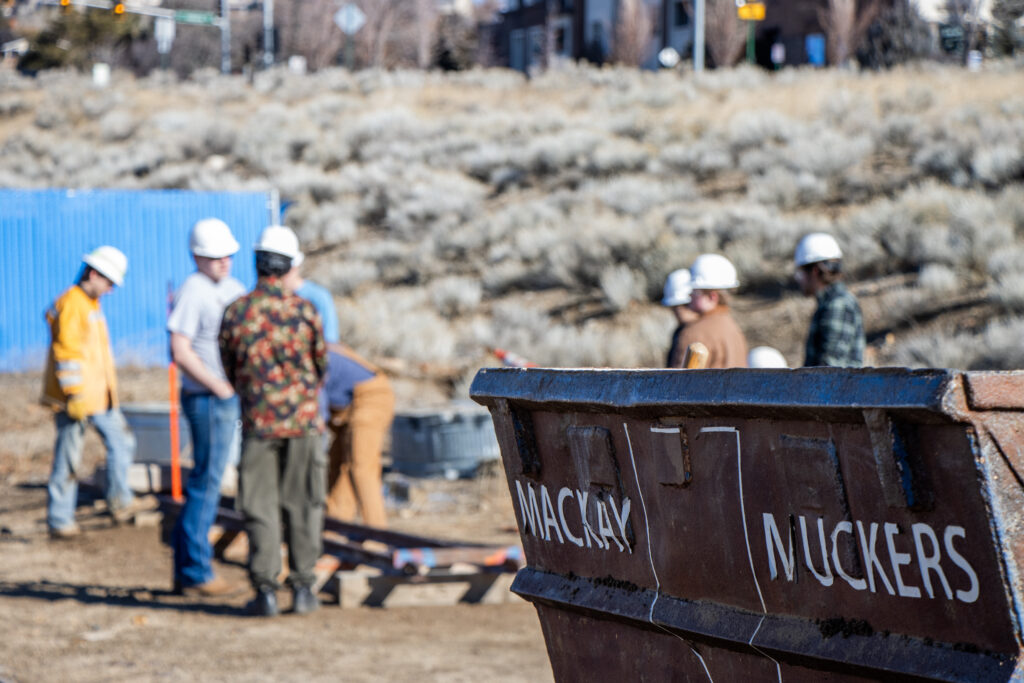
Members of the Mackay Muckers take a breather during practice. The cart they use for mucking practice sits in the foreground, to the right.
Gold pan is the favorite of Gabrielle Azevedo, a third-year member. The event, which uses five copper BB pellets per participant to simulate what would’ve been gold for miners of yore, is absolutely crawling with penalties.
“If you lose a BB, that’s a five minute penalty for each one,” Azevedo said. “It can be a little scary, because if you think about it, if you lose all five — that’s 25 minutes added to your team’s score.”
This, Rubio explained, makes it all the more impressive that UNR’s women’s division took home a first in gold panning last year.
“We were able to just get five minutes flat between all of our members,” Rubio said.
With five members per team in the mini-gold rush at once, that’s a zero-penalty performance from everyone, averaging a minute’s time each.
Azevedo and Rubio’s other, shared favorite is hand-steel. It’s a drilling event that’s recorded in dozens of holes across the Muckers’ concrete practice blocks.
“It’s basically just having a piece of steel and a hammer and drilling until your time’s up,” Rubio explained. “It’s fun! It’s scary at first, like everybody is always afraid of hitting your hand and everything … but it’s nice, if you’re having a bad day, just go out to the field and pound some steel. You’ll feel a lot better after!”
For Azevedo, it’s a thrilling challenge of endurance.
“You have to go fast,” Azevedo said, “but not use all of your energy at once. In hand steel, you’re going for two minutes straight. The first time I did it, I barely went a minute and I was already, like dead. My arms … especially with a four pound hammer.”
In hand steel, strength also meets precision. You and your team are scored based on how deep each of you can drill, but it doesn’t count if the depth is bent or crooked.
But nowhere in competitive mining is the balance between precision and speed more delicate than track stand. In track stand, your team of five has to assemble and disassemble a short railway: rails, ties, spikes, bolts and all. This is also timed, of course.
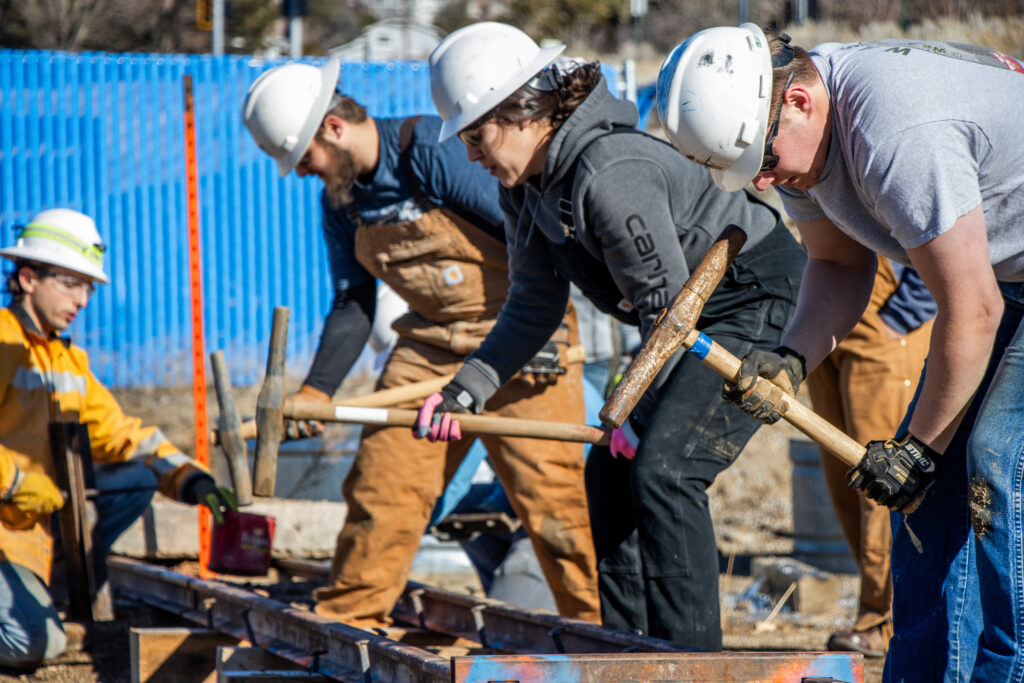
The Muckers sharpen their skills for track stand.
Along the way, there’s a litany of safety-related penalties to navigate. That’s why a demo of the procedure can often take up the better part of a Saturday practice — and loudly, too.
“When you lift a rail, you have to scream ‘RAIL!’” Azevedo explained during the proceedings. “It’s very important, just as if the judges are watching. You want to clean up the routine.”
For this, outside help is often needed.
“Trackstand is a different level, and that’s why we have to have our alums come out,” Rubio said.
One such alum was there during Saturday practice Feb. 9, but plenty remain in touch with the team well after their tenure.
“I’m talking to alums that did this in the 80s and the club is still going,” Rubio added. “And I just want to see the club keep going so that when I get to my 50s, I can come out and help these students learn the techniques for the mining games.”
For Azevedo, a geography major, the Muckers mark a departure from her studies, but one not as large as it seems.
“There’s so many things that we use minerals for,” Azevedo said. “It applies to a whole scope of things in life, so a whole scope of people can do it.”
For Rubio, a mining engineering major, the career connection is a little more obvious, but it’s rooted in history.
“Our state and even California were built off mining,” Rubio explained. “We’re doing old-school mining techniques, keeping this tradition alive because it will die out. Hardly anyone goes out gold-panning or even doing hand-steel. It’s what people were doing down in Virginia City, with skill — it wasn’t just ‘oh I’m gonna get a shovel and just keep digging,’ they had to be able to blast deposits; they had to be able to gold-pan.”
Track stand, she added, faithfully recreates what many Nevadans’ ancestors had to do in the creation of the state’s railroads.
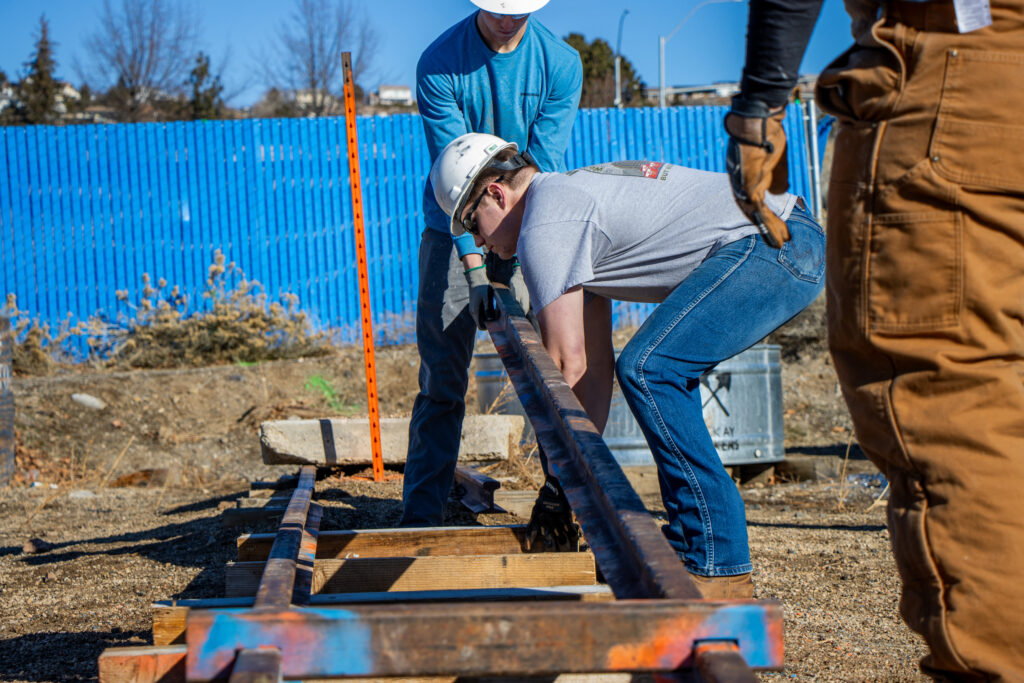
Members of the team lay down a rail during track stand practice.
By learning old techniques, there’s a hope that the Muckers will be able to carry the knowledge of past miners’ sacrifices with them. Early on, the games memorialized fallen miners who died in the 1972 Sunshine Mine Disaster. Because the rules prioritize safety and effective team work, competitive mining stands to produce safer, less destructive practices for our mined future.
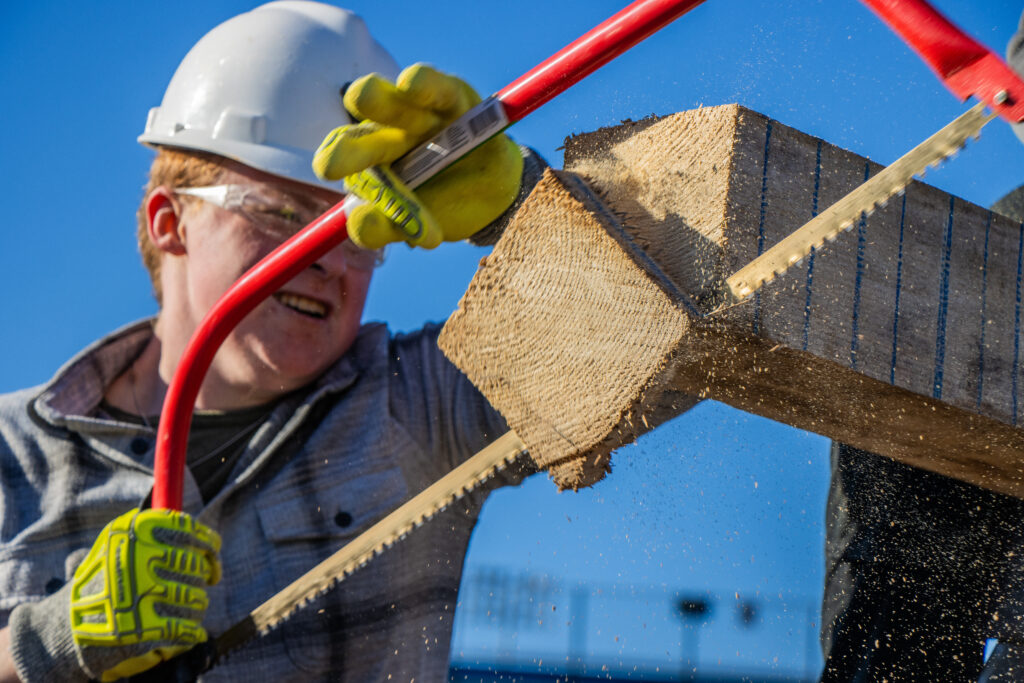
A member of the team practices for swede saw, an event testing sawing speed and precision.
And though it isn’t all about winning, Rubio has high hopes for this year, and the years beyond. The Muckers couldn’t put together another women’s division in time for Montana, but men’s and coed are geared up for the challenge.
“This competition is definitely gonna be a lot bigger than last year,” Rubio said. “I have a lot of goals for the men’s team because they competed in Australia, and this year they only have one new person.”
Rubio added that Montana is bringing five men’s teams to their home event. But Rubio believes the Muckers can show up, and show out. After all, the trophies in the geoscience student lounge can attest — they’ve done it before.
Peregrine Hart can be reached at jaedynyoung@sagebrush.unr.edu or @NevadaSagebrush.
Correction 3/16, 3:42 p.m. Competition is from March 20 to 23.
Correction 3/16, 3:42 p.m. The BB pellets are copper. A previous version stated they were plastic.
Correction 3/16, 3:42 p.m. Swede saw is a full team event, with each member taking a turn one at a time. A previous version stated that it was a two-person event.




